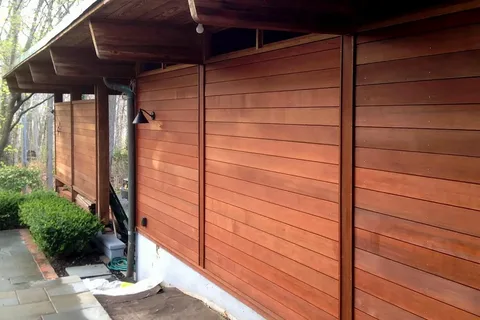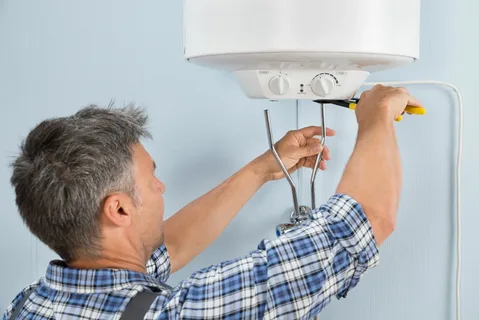If you open a decor magazine or scroll through Instagram, chances are you’ve seen shiplap walls. The rustic home trend is popular thanks to HGTV and Joanna Gaines.
While shiplap is beautiful, sometimes you want a different look. That’s where nickel gap comes in. It’s a similar look but less rustic.
Preparing the Surface
The surface on which you’re going to install your shiplap must be free of blemishes. For this reason, you must paint the wall before installing the shiplap. This will make it far simpler to paint between the shiplap cracks later. Ideally, you should choose a paint color that matches or is slightly lighter than your shiplap.
To install your nickel gap shiplap, begin by applying a bead of construction adhesive to the back of a board. Then, place it on the wall with its flange on top. Press it down and drive trim nails into the flange, using a pneumatic nailer for faster results. When you’re finished, the nail holes will be hidden by the boards above them.
If you plan to stagger the rows of nickel gap shiplap, ensure each one has at least an inch of overlap. This helps prevent moisture buildup and ensures that the ends of the boards line up properly with each other.
You may also want to coat the inner lip of the gap between rows with a coat of paint if you’re planning on painting the walls. This step isn’t necessary, but it will save you the hassle of having to fill in this area with a small brush later on.
For a classic look, you may choose to use a matte or flat finish on your shiplap. However, if you’re looking for something more elegant or vibrant, plenty of options are available, including semi-gloss. You can even choose to use a high-gloss finish on your nickel gap shiplap to achieve a more modern, rustic-looking look.
You can use your newly installed shiplap for walls, ceilings, wainscoting, and bar wraps. Whether you’re using it to add warmth and character to an accent wall or draw attention upward in your foyer, you can expect this timeless design element to enhance the look of any space. Contact PA Dutch Interiors LLC today to see how versatile this design option can be. We offer authentic, customizable EtchWood nickel gap planks that capture old barn wood’s saw marks and aged texture.
Installing the First Row
When you start to install your shiplap, it’s best to work from the bottom of the wall up. This way, gravity will help keep the boards straight as you work up the wall. The bottom row will also give you a chance to get your corner molding up if needed, which will hide any gaps or rough edges that may occur during the installation process.
Before you begin, grabbing your stud finder and identifying the studs on your walls is a good idea. Using a stud finder will make it easier to nail in your boards, as you’ll be able to locate where the studs are and mark them with a pencil. You can also use a vertical chalk line on the wall to indicate where to nail your boards.
Once you’ve located the studs, you can begin to install your first row of nickel gap shiplap. Using a level and the stud marks as your guide, align your first board on the wall with a piece of scrap wood, then use a hammer or nail gun to drive 2-inch trim nails through the flange and into each stud. Make sure that the studs are at least 16 inches apart.
Continue installing your shiplap in this manner, making sure to stagger the seams between each row. If you encounter any unexpected challenges while installing your shiplap, such as an uneven wall or an outlet that’s not flush with the wall, you can use a drywall saw to cut your shiplap to size and create a custom fit.
While you’re working, be sure to use the same construction adhesive that was used on the back of your shiplap when cutting it to size. This will ensure that the board is secure in place and helps prevent any moisture from getting behind the wall covering.
You can also use a finish nailer, which makes the job go much faster. If you choose to do this, be sure to only use the type of nails recommended by your nailer (gauge and brand) for ease of use. My dad has had trouble with his nailer jamming when he uses off-label nails, so we always pay a little extra for the brand-name ones!
Installing the Second Row
Shiplap is one of the most popular trends in home decor right now. You see it in magazines, on your favorite HGTV show, and plastered all over Instagram and Tik Tok. It’s easy to understand why – shiplap looks amazing! While vertical shiplap is more common, horizontal shiplap is also beautiful. It’s just as simple to install and makes for an instant update to any room.
If you are going to install your own shiplap, the first step is to find and identify the studs in your wall using a stud finder. Once you have identified the studs, use a pencil to mark a light line on your wall at each stud location (most studs are 16 inches apart). This will give you a guideline to work off of when installing your new shiplap.
Next, measure your shiplap board to ensure it is the correct size for your wall. If not, cut the board to the correct length using a table or circular saw. When cutting it, be sure to leave a 1/8-inch expansion gap at the end of your board.
Once you have the correct width of your shiplap board, place it against the wall to determine if it is straight using a level. Then, nail it to the wall using a finish nailer.
When it comes to the second row of shiplap, you will want to stagger the boards. This will create a more natural look.
Before starting, make a template for any outlets, vents, or switch plates. This will prevent you from drilling into them later on and save you a lot of time when installing.
If you are working with a large wall, having another person help hold up the board while you are nailing it to the wall is helpful. This will save you a lot of time and help you get the job done faster.
Once you have the first row of shiplap up, start on the second. Remember to use your level to ensure each board is straight. You may need to make a rip cut when you reach the last board in the row. This means that the board’s top edge will not fit the groove of the previous board. This is okay – simply add a nickel or 1/8-inch spacer to create the signature shiplap gap.
Finishing the Look
Nickel gap shiplap is an affordable and simple way to add character and texture to walls and ceilings. It is often seen in modern farmhouse designs and can be installed in a variety of rooms and styles. It’s easy to do and requires only a few essential tools. You can find shiplap paneling online or at local hardware stores.
When installing shiplap, it is important to mark and prep the wall before beginning the project. This includes ensuring that the surface is smooth, level, and free from cracks or imperfections. Once these steps are complete, you can begin the process of laying the first row. Depending on your style, you may choose to stain or paint the panels before installation. Staining will provide a more rustic look, while painting will give your home a clean and contemporary appearance. Preparing the wall for paint is also important by coating it with a primer and base coat. This will make covering the cracks between the boards much easier with a second coat of paint.
To create a uniform appearance, it is recommended to stagger the boards when installing them. You should also be sure to use the same color of paint or stain throughout the entire room. This will prevent the contrast between different shades from becoming too pronounced. Additionally, a matte or flat finish is ideal for shiplap as it will be less likely to show smudges or fingerprints.
While you can install shiplap on any interior wall or ceiling, it is most commonly used in bedrooms and bathrooms. This is because it provides a neutral backdrop that can be easily personalized with decorative elements and furnishings. Shiplap is also popular for the ceiling as it offers a unique, dramatic effect. It can transform a room into a beautiful farmhouse-inspired space when installed properly.
To get started with your DIY shiplap project, you will need to determine the room size and purchase the correct amount of material. You will want to add ten percent extra to account for mistakes or mismeasurements. It is also a good idea to start at the bottom of the wall, as this will be simpler to ensure that the boards are at a consistent level.





